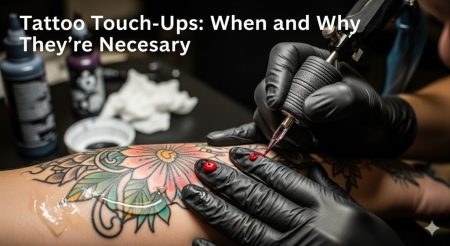Sometimes when people grow, they outgrow their old selves. This doesn’t mean that everything they did in their past was wrong, it just means that something like a tattoo that felt amazing for the moment is now nothing but embarrassment and pain.
While not everything in life can be reverted back to its original shape, we definitely have a solution for the regretful permanent tattoos.
If there was a tattoo you got in the past and now regret it, here are 4 possible techniques that can help you remove it:
- Laser Tattoo removal
Most of you must have definitely heard about skin and cosmetic laser treatments. It involves using a high-intensity light beam and ends up breaking the ink pigment colors to help remove the permanent ink.
If like most people, you have an all-black tattoo, using a laser would be relatively easier. Laser tattoo removal also uses two different lasers, leading to two completely different processes.
- Passive Laser Treatment
The upside of using this treatment is that it is extremely cost-effective. On the other hand, the downside is that your tattoo will only be partially faded. This is also performed by many hair and tattoo salons as it is comparatively less expertise than active laser treatment.
- Active Laser Treatment
If you want to completely remove the existence of the tattoo, this is your ideal choice. Preferred by dermatologists, active laser treatment involves various sittings and also involves proper aftercare for almost 6-12 months. They remove tattoos of every color and ink. But don’t you worry, every penny would be worth it as the results are very impressive.
- Intense Pulsed Light Therapy
Different from laser tattoo removal, this technique involves a broad spectrum of light, which helps remove the top level of your skin, or the epidermis. This technique works because it breaks down the tattoo into smaller components, and they are removed from the site by getting absorbed in the bloodstream.
Skin regeneration is then performed in the affected areas. Unfortunately, not everyone can undergo this process. People with colored tattoos are not advised as intense pulsed light therapy can possibly lead to permanent loss of their skin color. This technique is recommended for people with large tattoos.
Also Read: Behind the ear Tattoo for men
- Cryosurgery
Cryosurgery is widely used when it comes to treating skin cancers but what most people don’t know is that this technique is also used to remove tattoos from the skin.
With the help of a freezing agent, the tattooed area will be exposed to an extremely cold area. Commonly, liquid nitrogen is used. Then, to remove the top layer of the skin, dermabrasion will be used.
This process is extremely painful, so general anesthesia is used for the patients. But remember, cryosurgery can also damage your skin tissue.
Although this is not as expensive as the others on the list, this is not recommended for everybody. Cryosurgery does not work with green and yellow pigments. Also, it is not recommended for people with sensitive skin and who tend to scar very easily.
- Dermabrasion
In this method, a wheel or a high-speed brush will be used to abrade your skin. To put it simply, this technique extracts the ink-stained area.
To prevent the pain, general anesthesia will be used on the patients. This technique also involves multiple sittings and comes with a high risk of infection and scarring. Thus, it is not suggested for everyone.
Over to you…
With the rising trend of getting inked, the “tattoo removal” trend is also on the uprise. But, don’t worry. You are not alone. There are so many of us who regret the decision of permanent-ink on our skin for people or incidents that were not permanent. After all, there’s a reason why the tattoo removal market is valued at over $4794.9 million today.
Once you have selected your preferred choice of technique, my advice is you must look for experts in that arena. Make sure you do your own research before making any final decision. You can also reach out to people who have undergone the technique and ask them about their experience and after-effects of any sort.






